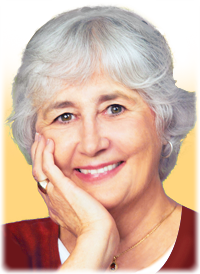Interview with Screentalk magazine
THE WAY OF STORY
Einstein was wrong. The world is made up of stories – not atoms. As children, we identify with various archetypes in fairytales or television series. Cinderella or The Brady Brunch. We begin living our selected myths while young, sometimes changing the icons.
After teaching the craft of writing for thirty years both in New York (The New School University) and in Los Angeles (U.S.C.) as well as working as a screenwriter in Hollywood (Touched by an Angel, etc.), I took time off and earned a graduate degree in Mythology. I re-emerged with a keen commitment to teach in a different way. Craft is simply not enough. I knew that somehow I had to convey both the inner and outer aspects of the writing process for the experience to be complete. While craft is vital, equally so is conveying the soul of writing, to birth the work from within. To invite the invisibles to guide us to the story within the story. With this goal in mind, I launched The Way of Story workshop first at the Esalen Institute in Big Sur, California, then sat down and wrote an integrative approach to writing, The Way of Story: the craft & soul of writing. The book, now in its second edition, is used in NYU writing programs and other schools. It is a hybrid: a book about writing all forms of narrative, as well as a memoir with an inner journey. I often hear from participants that The Way of Story workshop is “life-changing”. www.wayofstory.com
Sometimes story ideas may arise from what happens to us in our own lives. Yet they usually connect with something felt within. I was still acting in New York when cast to play Virginia Woolf in an off-Broadway comedy. I began reading everything I could find by and about Woolf in order to better portray the character. Then one day I just sat down and started writing a drama about her struggle with madness in a world gone mad, i.e., WW II — a story far removed from the life of this baby boomer raised in New Orleans and Texas. I had long been fascinated by the razor’s edge between creative genius and madness: Van Gogh, Nijinsky, and Virginia Woolf, to name a few. So this was the theme I chose to explore through her life. Virginia (later titled On the Edge) had the good fortune to be directed by the legendary Harold Clurman (who launched the plays of Tennessee Williams & Eugene O’Neill). The play went on to win the National Endowment for the Arts Award, but the real reward was the emotional response from the audience. After one evening’s performance, an older woman, born in Europe, approached me and was crying. She expressed how grateful she was that I had written of the Krystal Nacht incident in Europe. Tears filled her eyes as she held my hand tightly, and said simply, “I was there. I was there. ”
A surprise came when friends would come up after a performance of the play and remark how it reminded them of me. “It’s so you,” they would say. I was puzzled. Wasn’t this a play about novelist Virginia Woolf? Then slowly I realized that though the facts of the story were quite removed from my own life, the emotional content was in some ways parallel. In other words, the story dealt with themes I felt strongly about—something friends would notice, even if the playwright did not! The themes of Bloomsbury were friendship, integrity, and a devotion to the arts which would form a cornerstone for a civilization, a civilization that would survive Nazi Germany and World War II.
So, even when writing about well-known historical figures like Calamity Jane or Virginia Woolf, I still had to make their journey my own, re-discovering the story through myself. We live our lives in much the same fashion, seeing all of what occurs through an individual looking glass.
An Interview with award-winning writer, Cathrine Ann Jones Screentalk Magazine April 2003.
 The Way of Story
The Way of Story
2 Comments
admin
December 13, 2010http://www.wayofstory.com/consultation where info is listed if you wish to work together.
all the best, Catherine
admin
December 19, 2010http://www.wayofstory.com lists my email address.